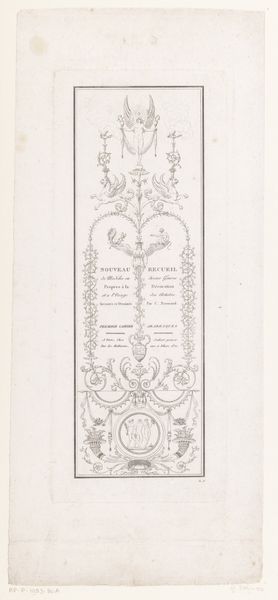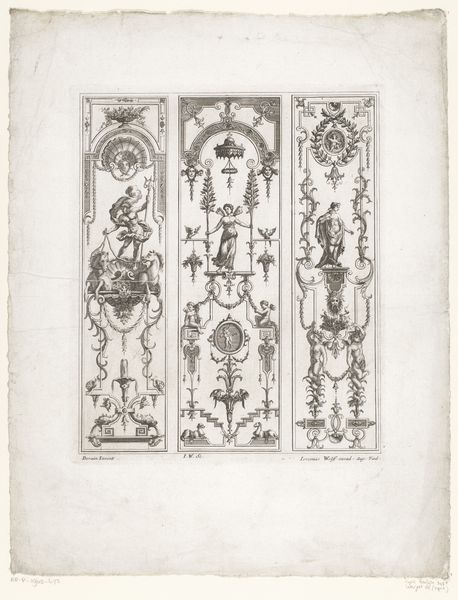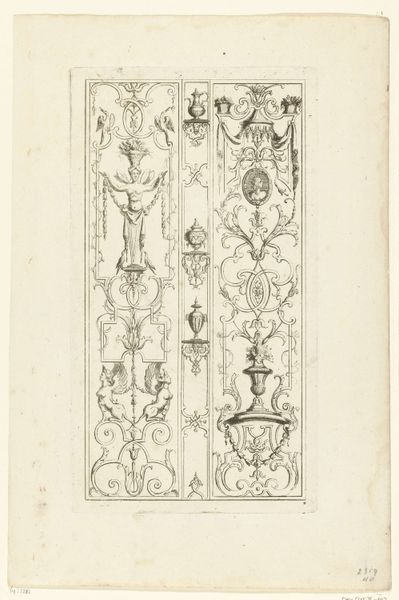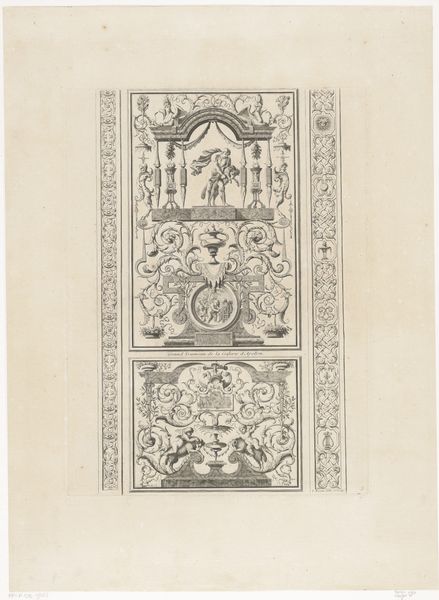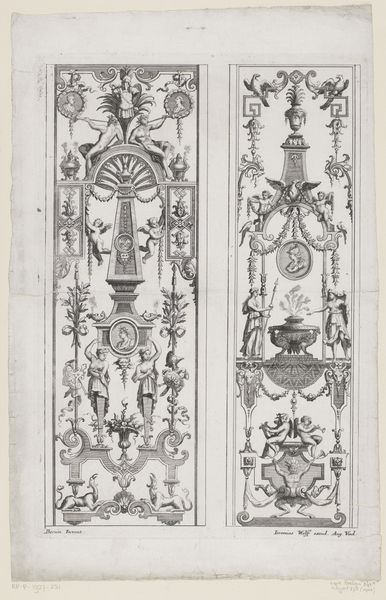
drawing, print, paper, engraving
#
drawing
#
neoclacissism
# print
#
paper
#
form
#
geometric
#
line
#
history-painting
#
engraving
Dimensions: height 352 mm, width 147 mm
Copyright: Rijks Museum: Open Domain
Curator: Here we have "Vier panelen met arabesken," or "Four Panels with Arabesques," a print made by Charles Pierre Joseph Normand in 1803. It's an engraving on paper showcasing Neoclassical designs. Editor: It strikes me as something found within the private chambers of the era, an airy, restrained set of graphic musings meant for higher company and contemplation. What a marvelously reserved, quiet arrangement! Curator: Absolutely. Observe how the composition is strictly organized in a vertical hierarchy. Normand’s careful use of line and geometric form—vases, figures, laurel wreaths—creates a precise, balanced structure within each panel. Note the rhythmic repetition of forms throughout. Editor: Indeed. And those forms! The prevalence of classical imagery – the winged figures, the urns, even the laurel wreaths— speak to a desire for continuity, a visual language that reaches back to antiquity for authority and grandeur. They’re like coded messages for those in the know. Curator: Precisely! The emphasis on idealized forms and the suppression of overt emotion are hallmarks of Neoclassical art. The very limitations in color create an elegant interplay with figure and ground. There’s a delicate dance here between symmetry and subtle asymmetry that guides the eye. Editor: That is where history and culture fuse in fascinating ways: these emblems of power were immediately recognizable visual symbols to the sophisticated court, hinting to mythological grandeur while being subdued in order to signal modern sophistication. The past reworked into a new self-conscious visual culture. Curator: Agreed. One can interpret this print almost as a set of instructions or design prototypes. How to think, how to feel, what to consider… through the formal vocabulary of Neoclassicism. Editor: It’s almost as if Normand has frozen a moment of aesthetic philosophy for us, neatly arranged on a single page, which remains quite accessible centuries later. Curator: It’s a potent demonstration of Neoclassical formalism – all made apparent by Normand’s acute sense for form and its organization within the visual plane. Editor: These carefully rendered symbols echo throughout history, carrying meaning far beyond their immediate aesthetic appeal. Fascinating, isn't it?
Comments
No comments
Be the first to comment and join the conversation on the ultimate creative platform.


